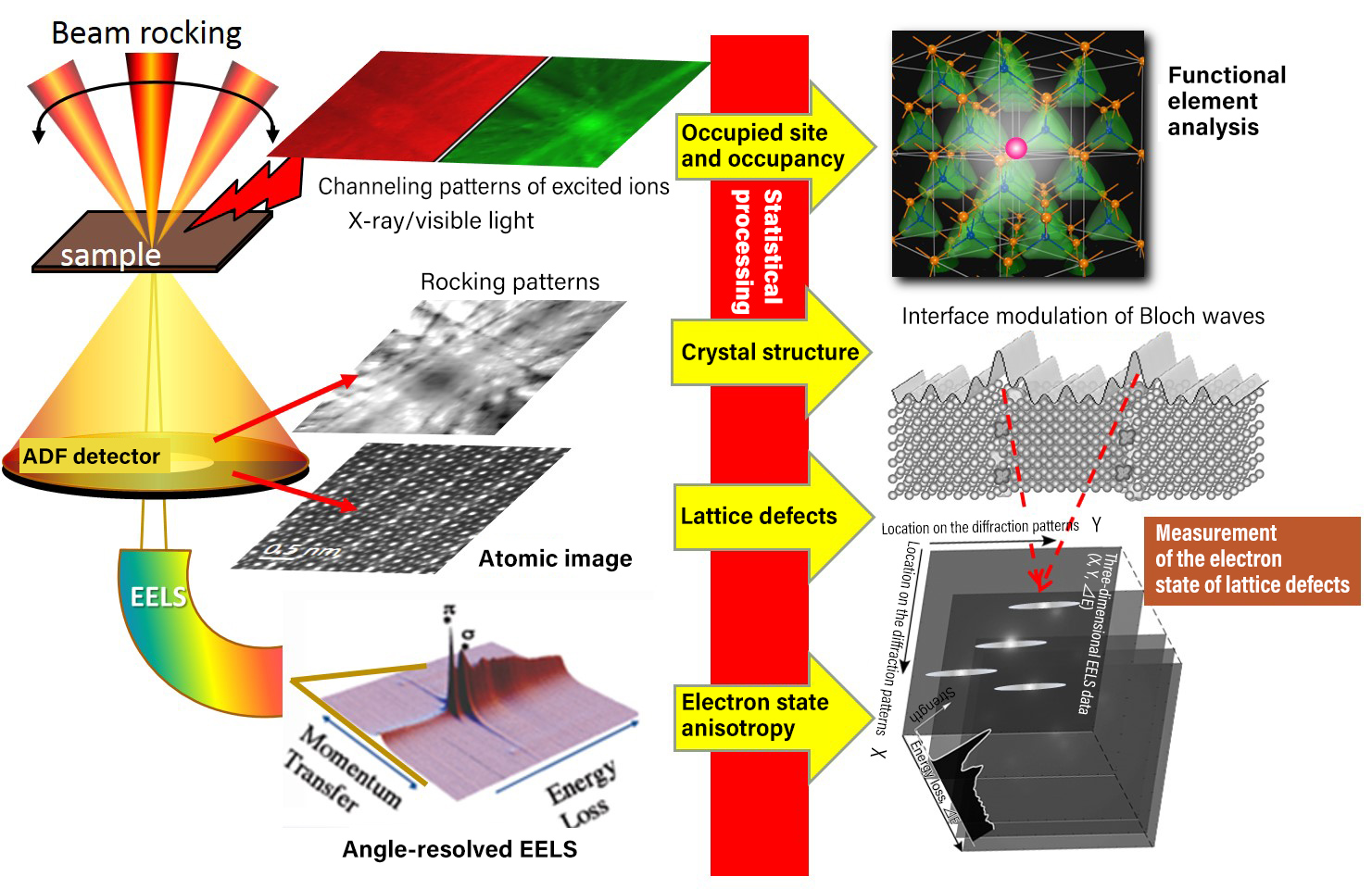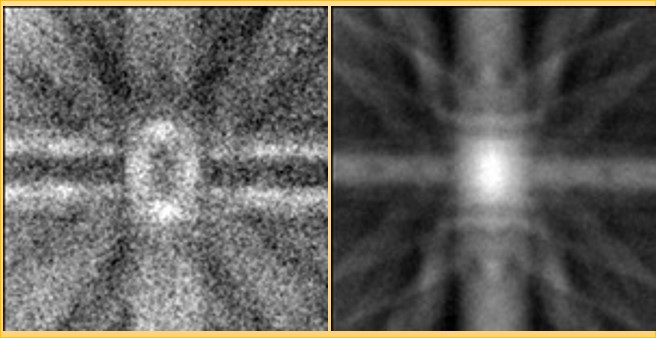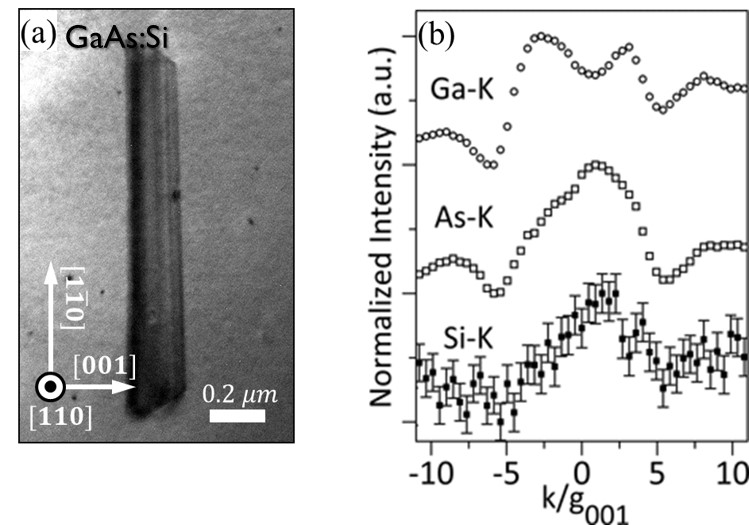(旧 量子エネルギー工学分野 エネルギー材料物性工学)
Research
Development of nano-scale analysis methods by advanced electron spectroscopy/microscopy as well as applications to functional materials
1. Application of electron magnetic circular dichroism (EMCD) to develop a novel measurement method of magnetic angular momenta.: Magnetic properties originate from the magnetic angular momentum of magnetic elements. We measure the magnetic angular momenta at a nanoscale resolution. The objective of this research is to create a spatial distribution map of magnetic angular momenta. This is an international research project conducted in collaboration with Uppsala University, Sweden.
2. Quantitative analysis of lattice defects based on spectra of X-ray fluorescence, visible light emission, and electron energy loss obtained by the beam-rocking method: We are developing a novel method that accurately measures the location of atoms, concentrations, site occupancies, and chemical states of various functional elements such as impurities introduced in semiconductors, dopants in ceramic devices, and activators in phosphors. (Click here to show Video)
3. Application of the latest information theories to develop a novel spectral resolution method: Big data is a hot topic nowadays. An example is spectral data obtained by automatic device control. We apply machine learning techniques to disentangle complex spectral image data into its individual components to solve diverse problems associated with materials analysis, especially issues related to STEM, electron energy-loss spectroscopy, and energy-dispersive X-ray spectroscopy.
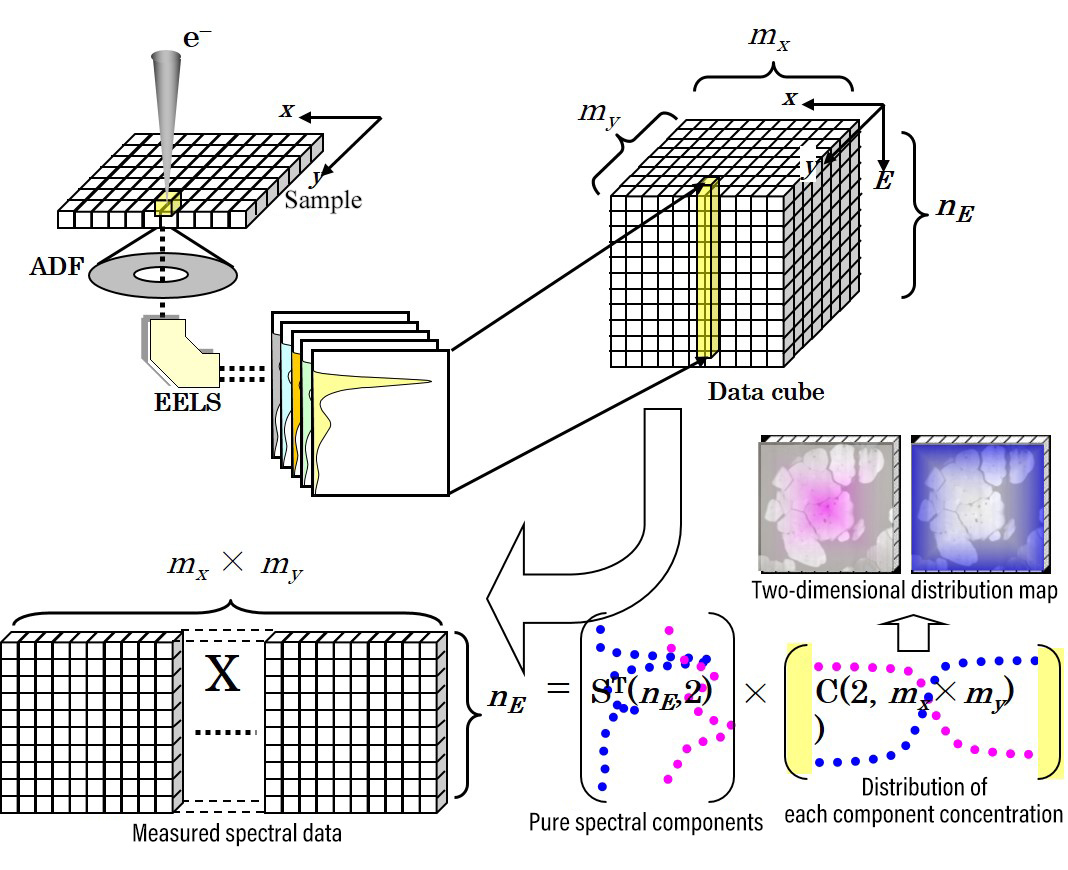
Application of advanced imaging techniques for functional analysis of secondary battery materials
We conduct hyperspectral imaging using the most advanced electron microscope to analyze the functions of various secondary battery materials such as those using lithium and sodium ions.
 STEM-EELS spectra of LiFePO4 olivine depolarizer |
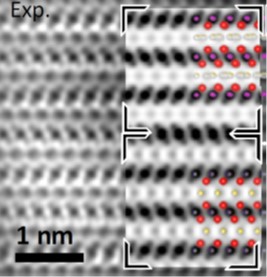 Atomic-resolution image of a sodium-ion battery material |
Development of white-light emitting material made from ubiquitous elements (Collaborative research with JFCC and the Nagoya Institute of Technology)
We analyze the functions of novel phosphors made solely from abundant and ubiquitous non-rare-earth elements.
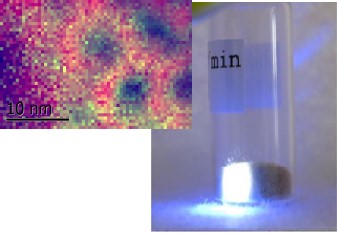
White light-emitting mesoporous silica and a mapping image of its chemical bonds (red and green denote Si-O and Si-C bonds, respectively).
Material design assisted by first-principles calculations using computer clusters
The first-principles approach solves the equations of motion of electrons in matter using computers. We employ this method to predict experimental spectra, understand the mechanisms of how material properties emerge from electron interactions, and model such processes. Our research will contribute to innovations in novel functional materials.
 Computer cluster |
 Map showing localized electrons in a visible light-active N-doped TiO2 photocatalyst |
Elucidation of the reaction mechanism of catalytic exhaust purifiers composed of fine metal particles (Collaborative research with Toyota Motor)
We examine how catalytic exhaust purifiers work using an electron microscope and elucidate the reaction mechanism.
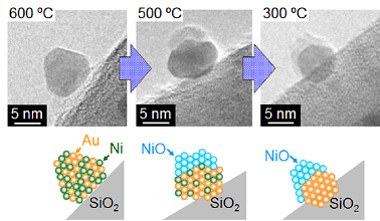
In situ/operando observation of Au-Ni bimetallic catalyst reactions within the electron microscope and its schematic representation.
Many other collaborative research projects with domestic and international partners.
名古屋大学未来材料・システム研究所
武藤研究室
〒464-8603
名古屋市千種区不老町EI創発工学館4階411号室
TEL 052-789-4684
FAX 052-789-5137
